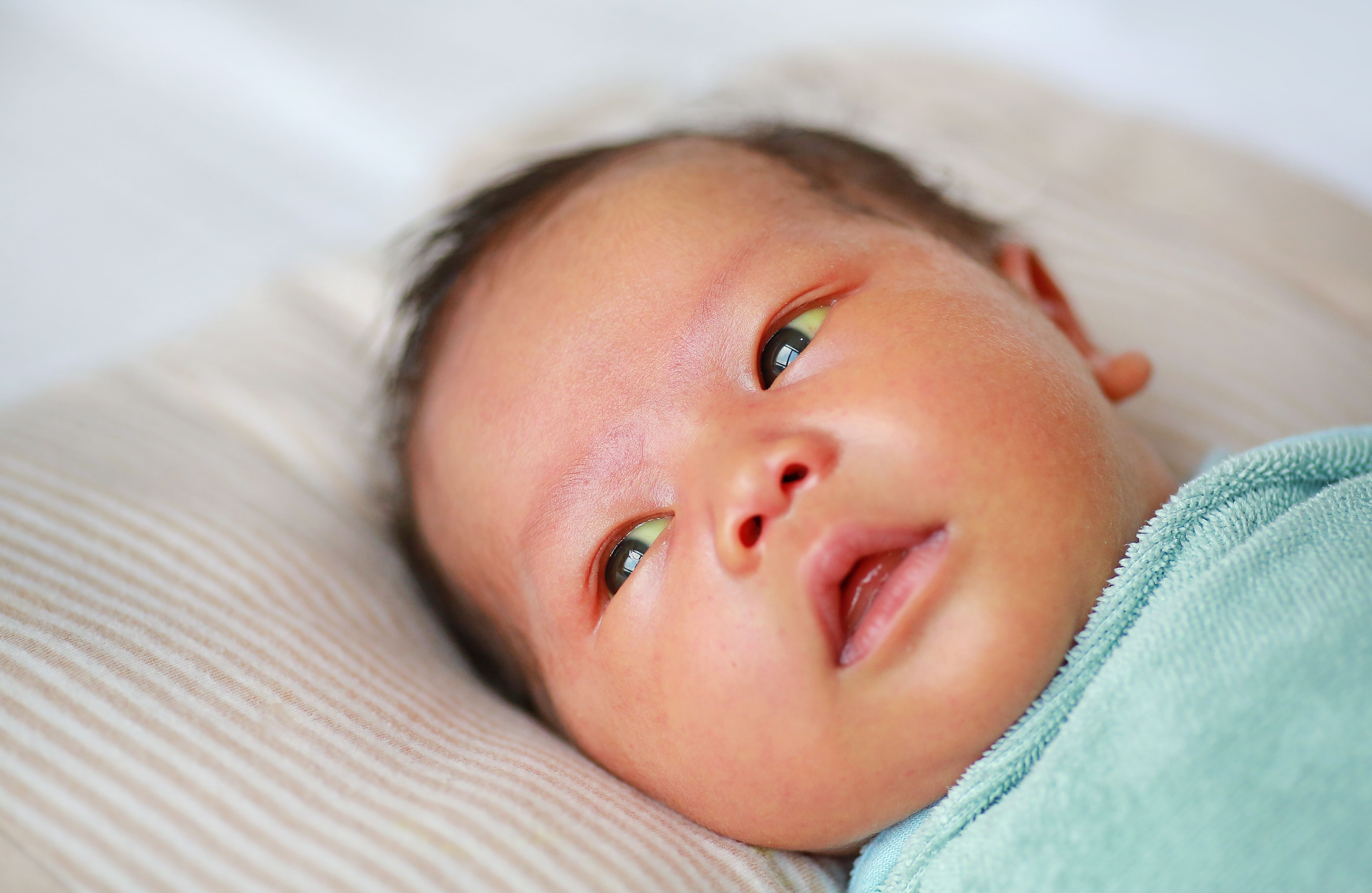Using a smartphone application to screen for neonatal jaundice
A good correlation and statistical agreement with total serum bilirubin was observed in a study of a new smartphone-based machine learning app, leaving it a potential neonatal jaundice screening tool.
Using a smartphone application to screen for neonatal jaundice | Image Credit: © zilvergolf - © zilvergolf - stock.adobe.com.

According to a new study published in JAMA Network Open, a new smartphone-based machine learning (ML) application demonstrated a good correlation and statistical agreement with total serum bilirubin (TSB), with a sensitivity of 100%, leading investigators to state the application has the potential to be a neonatal jaundice (NNJ) screening tool.
Background
The study investigative team noted that NNJ impacts 60% of term, and 80% of preterm infants, and that early detection is key to prevent bilirubin encephalopathy. Currently, the criterion standard diagnostic method of a total TSB measurement, is costly and invasive, while non-invasive methods such as inspection and icterometry have demonstrated variable accuracy.
"Transcutaneous bilirubinometry (TcB) is a rapid, noninvasive tool for screening bilirubin levels in health care settings, using optical spectroscopy to measure bilirubin through the skin," stated the investigators, who noted this as the standard method for screening neonates in Singapore.
"However, its use is limited to health care facilities, requiring calibration, maintenance, and trained personnel," said the authors in the publication. "This can lead to increased health care costs, as well as travel expenses and inconvenience for families."
Recently, smartphone apps have presented as substitutes for estimating bilirubin levels using digital images of the skin, though inconsistent performances across regions have occurred for existing apps such as Biliscan, according to the authors. To their knowledge, the investigators stated no existing smartphone-based NNJ apps concurrently use digital images from multiple regions "arranged in a cephalocaudal fashion, specifically the forehead, sternum, and abdomen, as predictors for a single bilirubin estimate, which is grounded in the Kramer principle29 of cephalocaudal advancement of dermal icterus that underpins bedside NNJ evaluation."
The objective of the study was to develop and validate a new artificial intelligence (AI)-based app to predict bilirubin (SpB) levels in a multiethnic neonatal population using skin and/or scleral color images.
Study details and results
The diagnostic study was conducted between June 2022 and June 2024 across a tertiary hospital and 4 primary care clinics in Singapore. A consecutive sample of neonates at 35 weeks' gestation or more and within 21 days of birth was used.
The app captured skin images via the central apeture of a standardized color calibration sticker card from "multiple regions of interest arranged in a cephalocaudal fashion, following the Kramer principle of dermal advancement of icterus," noted the authors.
The investigators stated that the ML model underwent iterative development and k-folds cross-validation, and that performance was assessed based on root mean squared error, Pearson correlation, and agreement with TSB. The final model underwent temporal validation.
In all, the app was validated for 546 neonates, with a median gestational age of 38 weeks, of which 52.4% were male. Iterative development and cross-validation was performed on 352 neonates.
The final ML model included yellowness indicators from the forehead sternum, and abdomen. Among temporal validation on 194 neonates, a Pearson r of 0.84 (95% CI, 0.79-0.88; P < .001) was yielded. The Pearson correlation coefficient was used to determine the linear relationship between SpB values and TSB.
According to results, 82% of data pairs were within clinically acceptable limits of 3 mg / dL, sensitivity of 100%, specificity of 70%, a positive predictive value of 10%, negative predictive value of 100%.
Results demonstrated a positive likelihood ratio of 3.3, negative likelihood ratio of 0, and area under the receiver operating characteristic curve of 0.89 (95% CI, 0.82-0.96) for SpB and 0.95 (95% CI, 0.87–1.00) for TcB, which suggested diagnostic accuracy for both measurements.
Conclusion
"The smartphone-based ML app, developed and validated in the Singapore population, demonstrated a strong correlation (Pearson coefficient of 0.84) between SpB and TSB," stated the investigative team. "It achieved 100% sensitivity and 70% specificity based on the decision rule of SpB 13 mg/dL or greater to predict TSB 17 mgl / dL or greater. Its diagnostic accuracy was comparable with TcB."
Additional prospective studies are needed to establish generalizability and cost-effectiveness of the tool in the a real-world setting, but the authors noted the potential for the app to be an NNJ screening tool, with treatment decisions based on the reference standard TSB.
Reference:
Hao Ngeow AJ, Moosa AS, Tan MG, et al. Development and Validation of a Smartphone Application for Neonatal Jaundice Screening. JAMA Netw Open. 2024;7(12):e2450260. doi:10.1001/jamanetworkopen.2024.50260
Newsletter
Access practical, evidence-based guidance to support better care for our youngest patients. Join our email list for the latest clinical updates.